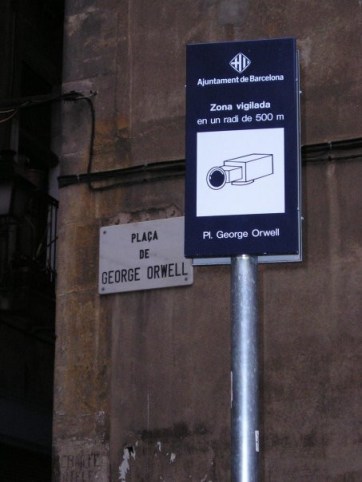Spotted this afternoon in the college gardens.
Facebook’s dodgy stats
Well, well. Facebook’s IPO Prospectus claims 845 million users, which is probably true. But it also claims that the number of “daily active users” is a whopping 483 million. Andrew Ross Sorkin of the New York Times found that number hard to swallow, so he went digging. And guess what? That number includes people like me who are registered Facebook users but almost never visit the site.
Facebook counts as “active” users who go to its Web site or its mobile site. But it also counts an entire other category of people who don’t click on facebook.com as “active users.” According to the company, a user is considered active if he or she “took an action to share content or activity with his or her Facebook friends or connections via a third-party Web site that is integrated with Facebook.”
Come again?
In other words, every time you press the “Like” button on NFL.com, for example, you’re an “active user” of Facebook. Perhaps you share a Twitter message on your Facebook account? That would make you an active Facebook user, too. Have you ever shared music on Spotify with a friend? You’re an active Facebook user. If you’ve logged into Huffington Post using your Facebook account and left a comment on the site — and your comment was automatically shared on Facebook — you, too, are an “active user” even though you’ve never actually spent any time on facebook.com.
“Think of what this means in terms of monetizing their ‘daily users,’ ” Barry Ritholtz, the chief executive and director for equity research for Fusion IQ, wrote on his blog. “If they click a ‘like’ button but do not go to Facebook that day, they cannot be marketed to, they do not see any advertising, they cannot be sold any goods or services. All they did was take advantage of FB’s extensive infrastructure to tell their FB friends (who may or may not see what they did) that they liked something online. Period.”
Facebook appears to be using the term “active” as a euphemism for “engaged” rather than how many users are actually going to its site every month.
I count as an “active user” because I’ve arranged for my Twitter stream to be fed to my Facebook account as a set of status updates. But as a member of Facebook’s advertising ecosystem I’m a dead loss because I never see an ad.
Retro chic: 4GB of photographs in a single film cassette
USB Film Roll at the Photojojo Store!
Thanks to Dave Clemente for the link.
Sigh. Remember film? Nor do I.
Zuck’s 2012 personal income tax bill: $1.5 billion
Spare a thought for the poor wee laddie. This from The Register.
If all goes according to plan, Facebook founder, chairman, and CEO Mark Zuckerberg’s share of the profit in his company’s upcoming initial public offering will result in him facing a tax bill of around $1.5bn for 2012.
What’s more, the Financial Times reports, that astronomical bill could increase if the IPO is more successful than many analysts believe.
Currently, the FT says, the stock is selling for around $40 per share in private secondary markets – a level that would net Lucky Zucky around $4.8bn at the IPO. Should the shares rise to a level that would put Facebook’s valuation at around $100bn – far from impossible in this wacky, bubbly world – the 27-year-old soon-to-be-squillionaire could net $6bn.
The company’s Form S-1 SEC filing earlier this week, which revealed the IPO plans, notes that Zuckerberg will use “substantially all of the net proceeds” that he will receive upon the sale of an as-yet undisclosed number of shares in the IPO to “satisfy taxes that he will incur upon his exercise of an outstanding stock option to purchase 120,000,000 shares of our Class B common stock.”
It’s nice to know that Zuckerberg’s wealth-management team is thinking ahead.
Those 120 million fully vested options that Zuckerberg plans to exercise, by the way, will cost him 6¢ per share. Remember that pittance when you read news of Facebook’s stock price on IPO day, which has yet to be scheduled.
As a result of the convoluted morass that is the US tax code, the profits that Zuckerberg will realize from excercising his options will be taxed as regular income, and not as capital gains…
Real hero of the Facebook story isn’t Zuckerberg
My take on the Facebook story — from yesterday’s Observer.
The number to watch is not the putative $100bn valuation but the 845 million users that Facebook now claims to have. The observation that if Facebook were a country then it would be the third most populous on the planet has become a cliche, but underpinning it is an intriguing question: how did an idea cooked up in a Harvard dorm become so powerful?
Thanks to a compelling movie, The Social Network, we think we know the story. A ferociously gifted Harvard sophomore named Zuckerberg has difficulties with women and vents his frustration by creating an offensive web application that invites users to compare pairs of female students and indicate which is “hottest”. He puts this up on the Harvard network where it gets him into trouble with the authorities. Then he lifts an idea from a pair of nice-but-dim Wasp contemporaries who need a programmer and, in a frenzied burst of inspired hacking, implements the idea in computer code, thereby creating an online version of the printed “facebooks” common to elite US universities. This he then launches on an unsuspecting world. The Wasps sue him but lose (though get a settlement). Zuckerberg goes on to become Master of the Universe. Cue music, fade to black.
It’s all true, sort of, but the dramatic imperatives of the narrative obscure the really significant bit of the story. So let’s rewind…
TCP/IP and the dim future of universities
This week’s Observer column.
Once upon a time, a very long time ago, in 1995 to be precise, a scholar named Eli Noam published an article in the prestigious journal Science under the title “Electronics and the Dim Future of the University”. In it, Professor Noam argued that the basic model of a university – which had been stable for hundreds of years – would be threatened by networked communications technologies.
Under the classical model, universities were institutions that created, stored and disseminated knowledge. If students or scholars wished to access that knowledge, they had to come to the university. But, Noam argued, the internet would threaten that model by raising the question memorably posed by Howard Rheingold in the 1980s: “Where is the Library of Congress when it’s on my desktop?” If all the world’s stored knowledge can be accessed from any networked device, and if the teaching materials and lectures of the best scholars are likewise available online, why should students pay fees and incur debts to live in cramped accommodation for three years? What would be the USP of the traditional university when its monopolies on storage and dissemination eroded?
If that was a good question in 1995, it’s an even better one today…
Lowry landscape
Quote of the day
“The problem with fiction, it has to be plausible. That’s not true with non-fiction.”
Tom Wolfe, Advice to Writers
News you can’t live without
From today’s NYTimes.
FOR barristers in 18th-century London, it was shoulder-grazing wigs. For the Mad men of 1950s New York, it was briefcases and fedoras. For the glass-ceiling-shattering women of the 1980s, it was shoulder pads.
And for today’s tech entrepreneurs in high-flying Silicon Valley, it is flamboyantly colored, audaciously patterned socks.
In a land where the uniform — jeans, hoodies and flip-flops — is purposefully nonchalant, and where no one would be caught dead in a tie, wearing flashy socks is more than an expression of your personality. It signals that you are part of the in crowd. It’s like a secret handshake for those who have arrived, and for those who want to.
“I have been in meetings where people look down and notice my socks, and there is this universal sign, almost like a gang sign, where they nod and pull up their pant leg a little to show off their socks,” said Hunter Walk, 38, a director of product management at YouTube, whose favorite pair is yellow, aqua and orange striped.
Note: the New York Times is serious newspaper.
Ironic type needed
[Source]




